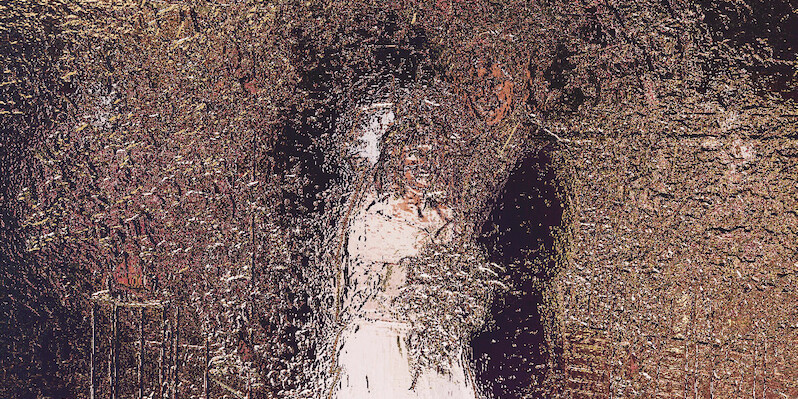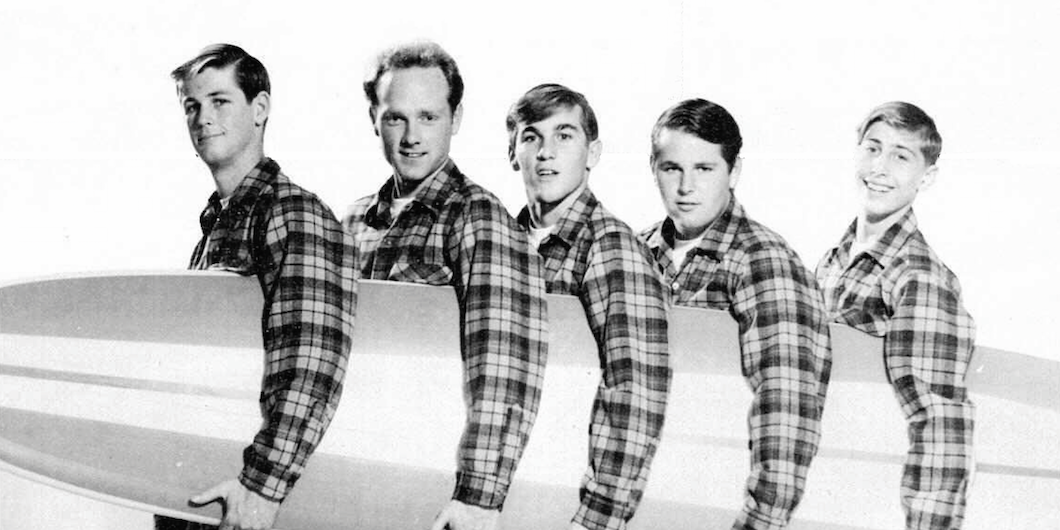THIS IS ONLY AN OPINION, BUT: no one should make art about their divorce until they’ve experienced at least one heartbreak after the marriage’s end. I keep an inventory of all the times I encounter an artist who manages, in telling a story about a divorce, to also include the story of another breakup that followed the supposedly definitive one. I love to see anything that complicates more straightforward accounts of life after divorce. That next heartbreak—the more devastating, the better—must be reckoned with, because it dispels any remaining illusions, or maybe delusions, about what one is capable of in
- print • Winter 2024
- print • Winter 2024
Sarah Lucas, CROSS DORIS, 2019, concrete, bronze, steel, iron, and acrylic paint, 28 1/8 × 28 3/4 × 26 3/4″. Image: Private collection. Courtesy the artist and Sadie Coles HQ, London © Sarah Lucas. ARE WE ALLOWED TO ENJOY THIS? Chicks and dicks, fags and chicken thighs? Sarah Lucas’s sculptures use corner-store staples—bananas, cigarettes, a […]
- print • Winter 2024
IF, AS CLAUDE LÉVI-STRAUSS PROPOSED, “the purpose of myth is to provide a logical model capable of overcoming a contradiction,” then the act of keeping a diary, that practice of private self-mythology, is at least partially an attempt to overcome the contradictions inherent in a self. Granted, there’s a raft of differences between myths passed down over eons and those made about oneself within the span of a single life. The myth of Icarus, for instance, has survived due to its decisive ending and moral weight. But self-mythology—whether in the form of a journal, internet persona, or daydreaming—is a molten
- print • Winter 2024
WHAT IS AN AUTHOR? A conduit for the divine or a poor schlub combining and recombining stale units of meaning? Both answers share the assumption that a literary work is the product of one consciousness. This assumption is a kind of spell: even a book’s acknowledgments, where the many other hands that went into its making come into view, or its publisher’s colophon, which advertises the institutional infrastructure behind the text, cannot totally ward it off.
- print • Winter 2024
Mulligan’s pub, Joyce cat, from Evelyn Hofer: Dublin (Steidl, 2023). © 2022 Estate of Evelyn Hofer. “I’M NOT EVEN INTERESTED IN MOMENTS.” The German photographer Evelyn Hofer (1922–2009) knew her aesthetic was in some ways at odds with her time; her postwar streets and squares are emphatically not in the style of Henri Cartier-Bresson and […]
- print • Winter 2024
WILLA CATHER WAS A MASTER OF BEGINNINGS. O Pioneers! (1913), her first novel after the false start of Alexander’s Bridge (1912), opens on a provocatively odd note: “One January day, thirty years ago, the little town of Hanover, anchored on a windy Nebraska tableland, was trying not to be blown away.” Soon the attention shifts to the “cluster of low drab buildings huddled on the gray prairie, under a gray sky . . . set about haphazard on the tough prairie sod; some of them looked as if they had been moved in overnight, and others as if they were
- review • February 6, 2024
The Winter 2024 issue of Bookforum is online now! In this edition: Gene Seymour revisits John A. Williams’s unsung 1967 novel, The Man Who Cried I Am; Jennifer Krasinski writes about Anne Carson’s unruly art of renewal; Carl Wilson considers Kyle Chayka’s book on algorithms and our supposedly flat new world; Jamie Hood reads Blake Butler’s anguished portrait of his late wife, the poet Molly Brodak; Katie Kadue reviews My Weil, Lars Iyer’s reconfigured campus novel; Kay Gabriel explores loss, abundance, and time in Robert Glück’s About Ed; and so much more. Also: reading recommendations on the war in Gaza, a
- review • December 5, 2023
Welcome to the Fall 2023 issue of Bookforum! In this edition, our contributors review new novels by Ed Park, J. M. Coetzee, Zadie Smith, Teju Cole, Lexi Freiman, and more. Also in this edition: Katie Kadue reads scene stealer and meme factory Julia Fox’s memoir; Hanif Abdurraqib writes about obsession, mythology, and Will Hermes’s new biography of Lou Reed; Audrey Wollen considers Helen Garner’s newly reissued 1984 novel The Children’s Bach; Laura Kipnis reads Janet Malcolm’s posthumous confessional memoir; Jane Hu surveys Sigrid Nunez’s quietly defiant fiction; and so much more.
- print • Fall 2023
“WHO IS Julia Fox?” This is the question taken up by Fox’s highly anticipated memoir Down the Drain (Simon & Schuster, $29)—so highly anticipated, in fact, that I was required to sign an NDA promising I wouldn’t leak any details from the press copy I received, the plain white cover of which read only, enticingly, EMBARGOED. It was also the question some of my, frankly, uncool friends and acquaintances asked me when I excitedly told them I was reviewing Fox’s book. “Josh Safdie’s muse?” I prompted. “Actually, she’s her own muse. You know . . . Uncut Gems?” I pronounced it “unkah jamz,”
- print • Fall 2023
WE LIVE IN CONFESSIONAL TIMES and the self-exposure bug eventually comes for us all, the steeliest of non-disclosers, no less. We age and turn inward, we become garrulous and spill. Even I, who once fled the first-person singular like a bad smell, now talk about myself endlessly in print, opening every essay or review with some “revealing” anecdote or slightly abashed confession, striving for the perfect degree of manicured self-deprecation and helpless charm. Needless to say, the more forthcoming you appear, the more calculated the agenda, not always consciously.
- print • Fall 2023
Marne Lucas and Pippa Garner, Get Out, Get Under, 2015, digital print, dimensions variable. Courtesy: the artists AFTER BEING KICKED OUT of art school for creating a model car with human legs that looked like it was pissing on a map of Detroit, the Conceptual artist Pippa Garner built her infamous Backwards Car (1973–74), reconfiguring a […]
- print • Fall 2023
BEYOND AN OLDER SIBLING’S headphones wringing the sweet, distorted fuzz of the Velvet Underground out and into my ears, my second most notable encounter with Lou Reed was in the pages of the Lester Bangs anthology Psychotic Reactions and Carburetor Dung, which has a whole section dedicated to Bangs and his relentless sparring with Reed. A book within a book, almost. There are two interviews that would, today, seem alarming in both their approach and the nature of their candidness, with Bangs demeaning Reed’s pal David Bowie, Reed taking the bait, Bangs shouting that Reed is full of shit. The
- print • Fall 2023
IN THE AWARDS-SWEEPING 2021 documentary Summer of Soul, a man named Darryl Lewis recalls his first Sly and the Family Stone encounter, at the Harlem Cultural Festival of 1969. In those days, he says, “When you saw a Black group, what you expected to see was, generally speaking, all men, all dressed in matching suits, ready even before they hit the stage to perform.” But here, Sly and company “kind of saunter out,” men and women, Black and white, a living quilt of psychedelic patterns, knit caps, and sundry frippery. “The instruments weren’t tuned,” Lewis says. “You wonder, What are they
- print • Fall 2023
A FRIEND OF MINE—the Canadian scholar of Buddhism David Drewes—once observed that we exist at different levels of magnification. Every moment of existence is susceptible to practically infinite expansion—or to shrinking almost to nothingness. We mostly speak and think at a conventional degree of magnification where experience appears to fit into conveniently labeled boxes—“tired,” “successful,” “female,” etc. But around the time that science was discovering the mysteries of cosmic scale—the fact that surfaces, for example, exist at some levels of magnification, but not at others—writers began to explore different scales of experience. Two basic methods emerged, which are still with
- print • Fall 2023
LAST YEAR, THE FIRST Chinese American movie star was saddled with yet another pioneering honorific: Anna May Wong became the first actress to have the figurative currency of her face made literal, minted on a US quarter. This star, born on silver nitrate, found an afterlife in copper-nickel. I can think of no wrier fate for someone trailed by so much ornamental simile, most often compared to things: Wong’s ex-lover Eric Maschwitz thought her “a piece of porcelain”; Walter Benjamin called her a “chinoiserie specimen” and likened her name to “full moons in a bowl of tea.” I am doing laundry the first
- print • Fall 2023
IN A RECENT INTERVIEW with The Face magazine, songwriter-producer Jack Antonoff—who has counted Taylor Swift, Lana Del Rey, and Lorde in his enviable stable—went on a rant against the NYC scene in general and Dimes Square specifically. “Well, what’s the export?” he asked. “What’s the book, what’s the band?”
- print • Summer 2023
BRIAN WILSON HAS BEEN DEAF IN HIS RIGHT EAR since childhood. He mixed the Beach Boys’ albums, including Pet Sounds, in mono because he couldn’t hear them any other way. “It was sort of like being robbed of something, some pleasure of life,” he said in 1976. “I’m not complaining, but it’s a little bit of a setback.” I think the deafness might explain why the left side of his mouth reaches up when he speaks, like he’s addressing his good ear. (The affect has become more pronounced with age, but it’s visible in footage from the 1960s.) “I got one
- print • Summer 2023
IN HIS 1980 ESSAY ON THE AMERICAN SCENE, “Within the Context of No Context,” George W. S. Trow supplies an anecdote from Harvard in the early 1960s. During an art history class on the Dutch masters, a Black student described Rembrandt as “‘belonging’ to the white students in the room.” The white students totally agreed with this. “They acknowledged that they were at one with Rembrandt,” Trow writes. “They acknowledged their dominance. They offered to discuss, at any length, their inherited power to oppress.”
- print • Summer 2023
IN 1912, THE SWEDISH ARTIST-CLAIRVOYANT Anna Cassel recorded the following message, crystal-clear instructions from a spirit guide, in her diary: “First, allow yourself to have dreams and then visions and colors and numbers, letters and images. Make a careful note of everything. It is of utmost importance to be thorough in your description.” Cassel was a […]
- print • Summer 2023
FRANZ KAFKA’S LAST STORY was a fable about art and labor. “Josephine the Singer, or the Mouse Folk” is a tale told by a mouse who, with marked erudition and fair-mindedness, reflects on an extraordinary community member, the singer Josephine. At times of danger or emergency, the news will spread that she plans to sing. The community assembles, and Josephine, delicate and frail, stands before them in song, her arms spread wide, her throat stretched high. The tones emanating from that delicate throat are, according to some, not singing at all but rather ordinary piping—if anything, weaker and thinner than the



















